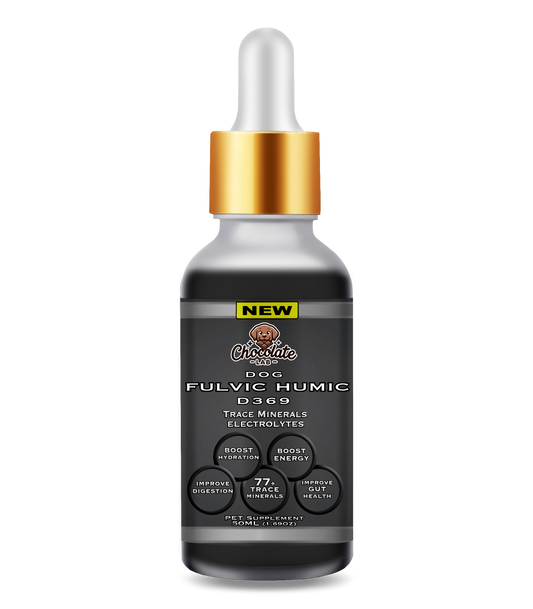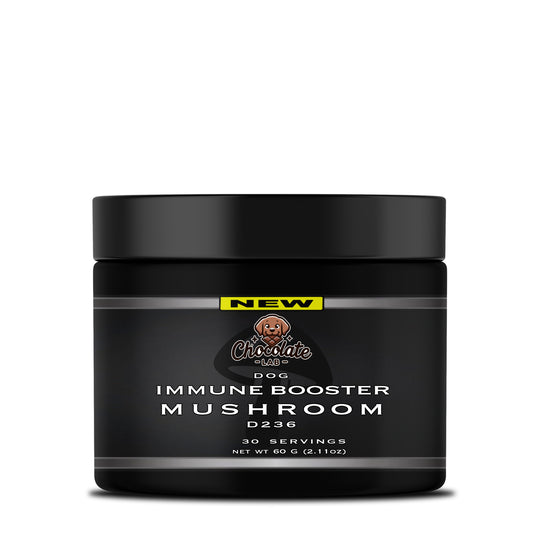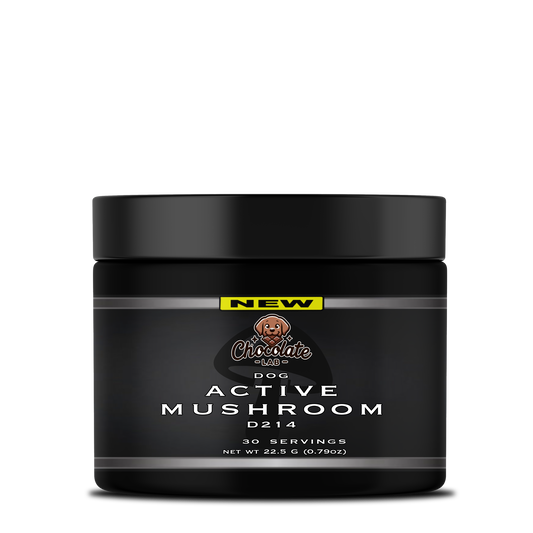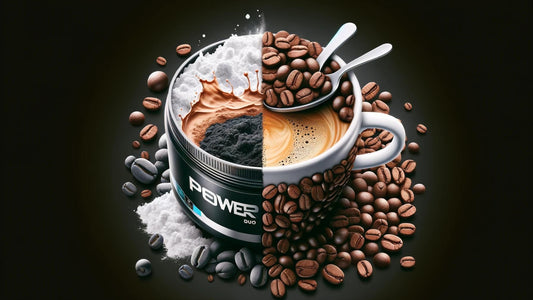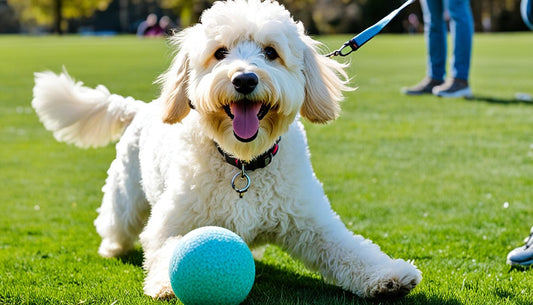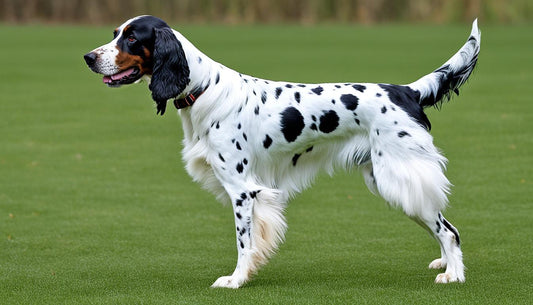Dive into the fascinating world of Bulldogs! Ever wondered about the differences between the Olde English Bulldogge and the classic English Bulldog? This article is your ultimate guide, unpacking each breed's unique characteristics, from their historical roots to their physical traits, temperament, health issues, and care requirements.

Olde English Bulldogge vs English Bulldog
Share
Olde English Bulldogge vs. English Bulldog
By Chocolate Lab
Published on 03/29/2024, 6:30 AM MST
Last Updated on 03/29/2024, 6:30 AM MST
Olde English Bulldogge vs. English Bulldog Comparison: A Detailed Look at Differences and Similarities
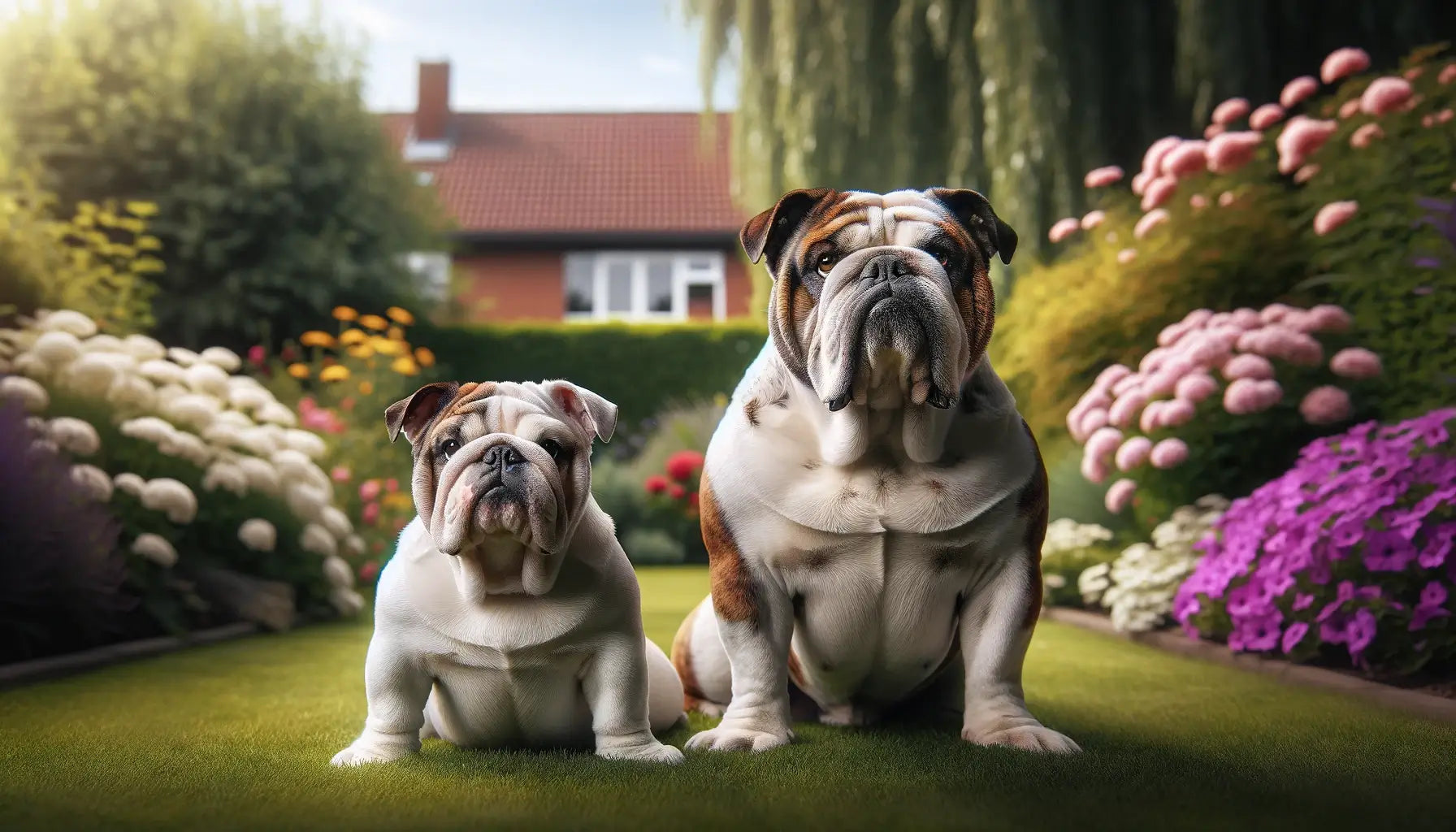
| Characteristic | Olde English Bulldogge | English Bulldog | Key Differences |
|---|---|---|---|
| Origin | Re-bred in the 1970s in the USA | Originated in England, 1500s | Olde English Bulldogge is a more recent breed |
| Purpose | Bred for health, athleticism | Bred for bull-baiting, now a companion | Olde has fewer health issues, more athletic |
| Life Expectancy | 11-14 years | 8-10 years | Olde English Bulldogge tends to live longer |
| Health | Fewer genetic health issues | Prone to more health issues | English Bulldogs suffer from more health problems |
| Temperament | Energetic, friendly, easy to train | Calm, courageous, friendly | Olde English Bulldogge is generally more active |
| Size | 50-80 lbs, more muscular | 40-50 lbs, less muscular | Olde English Bulldogge is larger and more muscular |
| Maintenance | Low shedding, requires regular exercise | High maintenance in grooming, less exercise needed | English Bulldogs require more grooming, less exercise |
| Cost | Generally less expensive | Can be more expensive due to health care | English Bulldogs might incur higher long-term costs |
Table of Content
- Introduction to Olde English Bulldogge and English Bulldog
- Historical Background and Development
- Physical Characteristics Comparison
- Temperament and Personality Traits
- Health and Lifespan Differences
- Exercise and Activity Level Needs
- Training and Socialization
- Suitability for Families and Living Conditions
- Grooming and Care Requirements
- Popularity and Availability
- Cost of Ownership
- Pros and Cons of Each Breed
- Conclusion: Which Breed is Right for You?
- FAQs on Olde English Bulldogge vs. English Bulldog
Introduction to Olde English Bulldogge and English Bulldog
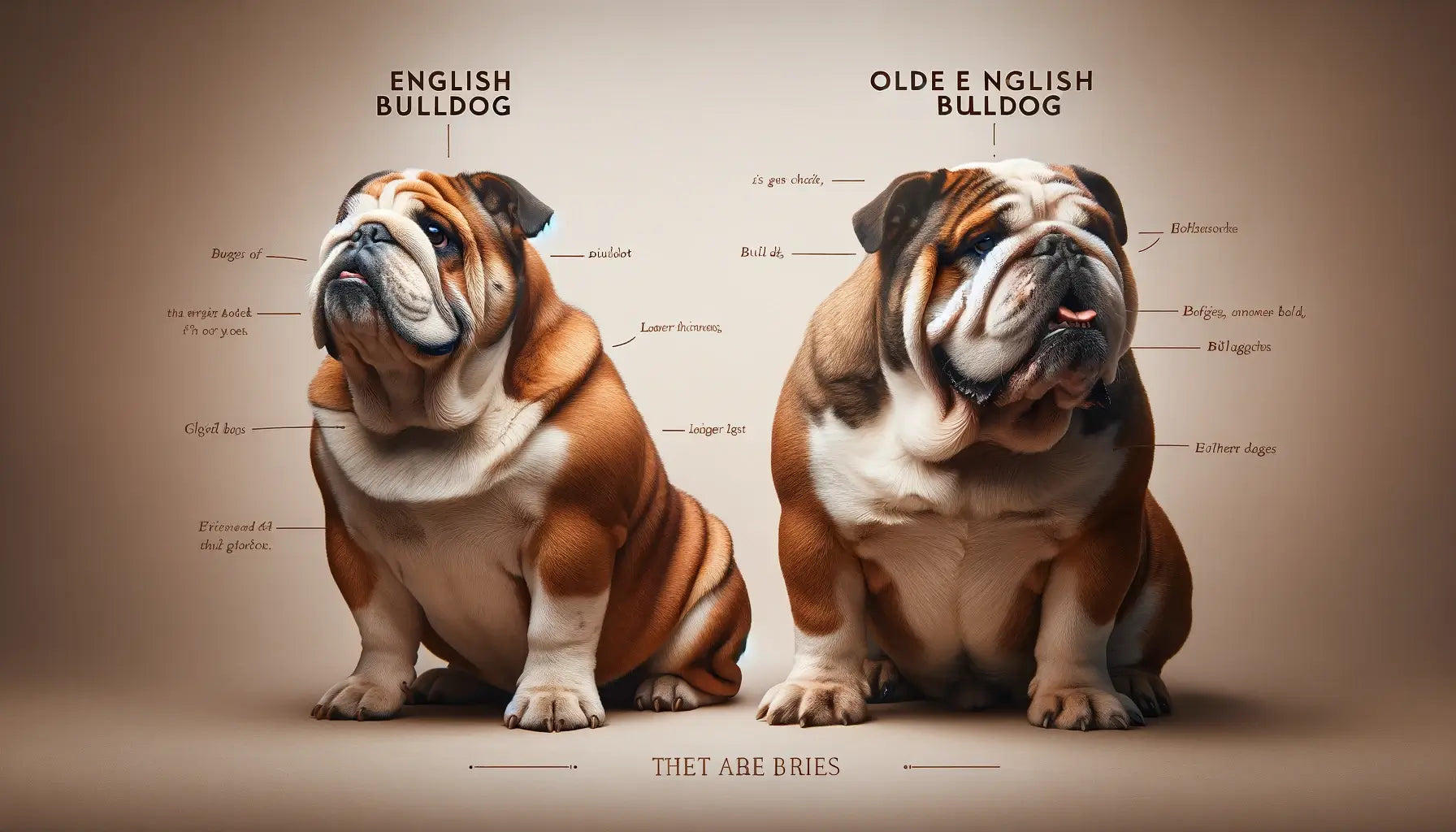
Exploring the World of Bulldog Breeds
The Olde English Bulldogge and the English Bulldog, each with their unique charm and history, offer fascinating insights into the canine world's diversity. Known for their distinctive physical appearances and engaging personalities, these breeds have not only etched their places in history but also in the hearts of dog enthusiasts globally. The English Bulldog, with its storied past in British culture, contrasts interestingly with the Olde English Bulldogge, a breed developed to capture the essence of its ancestors while emphasizing health and vitality. These breeds' journey from historical significance to modern-day popularity highlights their enduring appeal and the special place they hold in the world of dog lovers. Understanding their backgrounds, characteristics, and why they remain favored choices among many is crucial for anyone considering bringing these remarkable animals into their home.
Historical Significance and Breed Overview
The English Bulldog's roots in British tradition and its evolution from a sporting dog to a beloved companion tell a story of transformation. Conversely, the Olde English Bulldogge was bred in recent decades to resurrect the physical and temperamental qualities of the early bulldogs, aiming for a breed with fewer health issues and more athleticism.
Characteristics: A Comparative Look
Both breeds share the bulldog lineage but differ significantly in appearance, temperament, and health profiles. Their unique traits cater to different preferences, making them suitable for a variety of households and lifestyles.
Why They Captivate Dog Enthusiasts
Their undeniable charisma, combined with distinct personalities, has solidified the Olde English Bulldogge and the English Bulldog's popularity. Each breed offers a unique blend of loyalty, affection, and presence, appealing to a broad audience of dog lovers.
Breed Comparison Table
| Trait | Olde English Bulldogge | English Bulldog | Comparative Notes |
|---|---|---|---|
| Size | Larger, athletic build | Compact, sturdy physique | Olde English Bulldogges tend to be more agile |
| Lifespan | 11-14 years | 8-10 years | Longer lifespan in Olde English Bulldogges indicates better health |
| Temperament | Energetic, confident | Calm, resolute | Varying energy levels suit different family dynamics |
🐾 Selecting the Perfect Match
- Consider Activity Levels: The breed you choose should match your lifestyle's pace and space.
- Health and Longevity: Understanding each breed's health predispositions can help in preparing for a long-term commitment.
- Family Dynamics: Both breeds are known for their loyalty, but their size, energy, and care needs might mesh differently with your household.
- Provide your dog with the ultimate care with our Dog Wellness Supplement Bundle! Keep them thriving and living their best life every day!
Historical Background and Development

The Rich Histories of Bulldog Breeds
The historical backgrounds of the Olde English Bulldogge and the English Bulldog are as intriguing as the breeds themselves. The English Bulldog's lineage traces back to ancient times, playing roles that ranged from ferocious participants in bull-baiting to the affectionate companions we know today. The Olde English Bulldogge, on the other hand, was conceived with the intention of reviving the healthier, more athletic version of the bulldog from the past. This breed's creation was driven by the desire to address the health challenges faced by modern English Bulldogs, aiming for a dog that retained the bulldog's spirit and appearance but with enhanced vigor and vitality. These developmental journeys have not only shaped the physical and temperamental traits of each breed but also their standing in the dog world, making them fascinating subjects for those interested in canine history and breed evolution.
Tracing the English Bulldog's Evolution
The transformation of the English Bulldog from a bull-baiting powerhouse to a beloved pet reflects significant changes in societal attitudes towards animals and dog breeding. This breed's history is a testament to how much dog breeds can evolve over time, both in purpose and in physical characteristics.
The Creation of the Olde English Bulldogge
Initiated by breeders who valued the historical bulldog's attributes, the development of the Olde English Bulldogge was a deliberate effort to combine the bulldog's rugged beauty and tenacity with a structure and temperament suited for a healthier, more active lifestyle. This breed stands as a tribute to what thoughtful, informed breeding practices can achieve.
Evolution Table: Tracing Breed Lineages
| Aspect | English Bulldog | Olde English Bulldogge | Historical Impact |
|---|---|---|---|
| Origin | Ancient England | 1970s America | Reflects cultural and regional breeding goals |
| Purpose | Bull-baiting, then companionship | Healthier alternative with historical traits | Shift from work/sport to health and pet quality |
| Key Figures | Breed enthusiasts and the British nobility | David Leavitt and other modern breeders | Individuals who have shaped the breeds' courses |
📘 Insights into Breed Selection
- Historical Appeal: Each breed's history might appeal differently depending on personal interests in canine heritage.
- Health Focus: The Olde English Bulldogge offers an alternative for those concerned about the English Bulldog's health issues.
- Understanding Breed Evolution: Knowledge of each breed's development can enhance appreciation and inform care practices.
- Empower your dog's immune system with our Critical Immune Defense! Shield them from harm and keep them feeling their best!
Physical Characteristics Comparison

Detailing the Distinctive Builds of Bulldog Breeds
The Olde English Bulldogge and the English Bulldog, while sharing a common lineage, exhibit notable differences in their physical makeup. These distinctions not only contribute to each breed’s unique appeal but also affect their overall health, agility, and care requirements. The Olde English Bulldogge, bred for a return to the athletic form of early bulldogs, boasts a more muscular and leaner build compared to the English Bulldog, which is recognized for its distinctive squat, stocky physique and iconic wrinkled face. By examining the size, weight, coat, and other physical traits, potential owners can gain valuable insights into which breed may best suit their preferences and lifestyle.
Size, Weight, and Build Variations
The Olde English Bulldogge tends to be taller and less prone to obesity than its English counterpart, offering a more athletic appearance and capability.
Coat Type, Colors, and Grooming Needs
Both breeds showcase a variety of coat colors, but their grooming needs differ, especially considering the English Bulldog’s requirement for regular care of its facial wrinkles.
Facial Structure and Stance Distinctions
The more pronounced jaw and less extreme brachycephalic (short-nosed) facial structure of the Olde English Bulldogge contrast with the English Bulldog’s characteristic pushed-in nose, contributing to differing health outcomes.
Physical Traits Comparison Table
| Trait | Olde English Bulldogge | English Bulldog |
|---|---|---|
| Height | 16-20 inches | 14-16 inches |
| Weight | 50-80 pounds | 40-50 pounds |
| Build | Muscular and agile | Compact and stocky |
| Coat Type | Short and smooth | Short and fine |
| Facial Structure | Less brachycephalic | More brachycephalic |
| Grooming Needs | Moderate | High due to wrinkles |
📏 Recognizing Each Breed’s Unique Physical Attributes
- Adaptability to Lifestyle: The physical characteristics of each breed can influence their fit within various home environments and activity levels.
- Health Considerations: The distinct physical traits of each breed have implications for their overall health and care needs.
- Personal Preference: Potential owners should consider which breed’s appearance and grooming requirements align best with their preferences and capacity for upkeep.
- Is your dog's coat lacking luster? Revive it with our Fur & Coat Dog Supplement! Unlock the potential for a show-stopping coat your dog deserves!
Temperament and Personality Traits

Exploring the Behavioral Essence of Bulldog Breeds
The temperaments of the Olde English Bulldogge and the English Bulldog are as distinctive as their physical appearances. While both breeds share a common foundation of loyalty and affection towards their families, there are nuanced differences in their energy levels, sociability, and adaptability that prospective owners should consider. The Olde English Bulldogge typically exhibits a more active and alert demeanor, making it suitable for families looking for a more energetic companion. In contrast, the English Bulldog is renowned for its calm and dignified temperament, often preferring leisurely activities and close companionship. Understanding these personality traits is essential for aligning a breed’s natural tendencies with an owner’s expectations and lifestyle.
Sociability, Energy Levels, and Adaptability
Both breeds are known for their strong bonds with humans, but their energy levels and adaptability to different environments can vary, influencing their suitability for various households.
Intelligence, Training Potential, and Family Friendliness
While both bulldog breeds show intelligence and capability for training, their distinct temperaments can affect their responsiveness and the approaches needed for effective learning.
Behavioral Tendencies Unique to Each Breed
Recognizing each breed’s behavioral tendencies, including potential for playfulness or stubbornness, can help in fostering a harmonious living situation.
Behavior Traits Comparison Table
| Trait | Olde English Bulldogge | English Bulldog |
|---|---|---|
| Sociability | High with people and pets | Friendly but may prefer humans |
| Energy Level | Moderate to high | Low to moderate |
| Adaptability | Versatile, good with changes | Best in stable, calm environments |
| Training Potential | Responsive to training | May show stubbornness |
| Family Friendliness | Excellent with children and pets | Good with children, cautious with pets |
🐕 Raising a Balanced and Happy Dog
- Matching Energy to Lifestyle: Choose a breed whose energy level complements your family’s lifestyle.
- Training and Socialization: Early and consistent training can mitigate any breed-specific behavioral challenges.
- Environmental Considerations: Consider each breed’s adaptability when thinking about living arrangements, especially in smaller spaces or busy households.
- Support your dog's gut health naturally with our Probiotic for dogs! Keep their digestive system balanced and functioning at its best!
Health and Lifespan Differences

Navigating Health Aspects of Bulldog Breeds
The health profiles and lifespan expectations of the Olde English Bulldogge and the English Bulldog are critical considerations for anyone looking to welcome these breeds into their home. The Olde English Bulldogge was specifically developed to address some of the health issues prevalent in the English Bulldog, resulting in a breed with a generally longer lifespan and fewer hereditary health problems. However, both breeds require attentive care and awareness of their specific health needs to ensure a long, fulfilling life. Understanding the common health challenges, from respiratory issues in the English Bulldog due to its brachycephalic nature, to joint concerns in both breeds, is essential for providing appropriate care.
Breed-Specific Health Challenges
Each breed faces its own set of health challenges, with the English Bulldog particularly prone to more severe issues related to its distinctive physical traits.
Lifespan and Influencing Factors
The typically longer lifespan of the Olde English Bulldogge reflects its breeding for improved health and vitality, while the English Bulldog’s lifespan highlights the importance of specialized care.
Healthcare and Wellness Recommendations
Proactive healthcare, including regular veterinary check-ups and preventive measures, plays a crucial role in managing breed-specific health risks and enhancing quality of life.
Health Issues and Lifespan Comparison Table
| Health Issue | Olde English Bulldogge | English Bulldog | Lifespan |
|---|---|---|---|
| Respiratory Problems | Less common | Common due to brachycephalic nature | OEB: 11-14 years, EB: 8-10 years |
| Joint Issues | Moderate risk | Moderate to high risk | Impact on mobility and comfort |
| Skin Conditions | Moderate | High due to wrinkles and folds | Requires regular care |
| Heart Conditions | Less prevalent | Prevalent in some lines | Cardiovascular health |
| Obesity | Lower risk with active lifestyle | Higher risk due to low energy | Diet and exercise are key |
🩺 Proactive Health Maintenance Tips
- Regular Vet Visits: Essential for early detection and management of breed-specific health issues.
- Appropriate Exercise: Tailor activities to avoid exacerbating health problems, particularly those related to joints and breathing.
- Dietary Management: Monitor diet closely to prevent obesity and support overall health.
- Experience peace of mind with our Immune Booster for dogs! Shield your dog from illness and enjoy more quality time together!
Exercise and Activity Level Needs

Tailoring Activities to Bulldog Breeds
The exercise and activity needs of the Olde English Bulldogge and the English Bulldog significantly differ, reflecting their distinct energy levels and physical capabilities. While the Olde English Bulldogge requires a more robust exercise regimen to channel its energy and maintain health, the English Bulldog benefits from moderate, less strenuous activities due to its lower energy level and physical structure. Understanding these needs is crucial for keeping each breed healthy, happy, and well-adjusted. It’s important for potential and current owners to tailor their dog’s exercise routines to match the breed’s specific requirements, thereby preventing health issues related to inactivity or overexertion.
Ideal Exercise Routines
A balance of physical and mental stimulation tailored to the breed’s capacity can significantly impact their well-being. The Olde English Bulldogge thrives on activities that engage both mind and body, whereas the English Bulldog requires careful consideration to avoid respiratory strain.
Impact of Breed-Specific Energy Levels
The inherent energy levels of each breed guide the type and amount of exercise needed. Owners should consider these levels to devise a suitable activity plan that fulfills their dog’s needs without risking their health.
Keeping Each Breed Physically and Mentally Stimulated
Activities should not only focus on physical health but also on mental engagement. This approach ensures a well-rounded regimen that supports overall development and satisfaction.
Activity Table: Recommended Daily Exercise
| Activity Type | Olde English Bulldogge | English Bulldog | Notes |
|---|---|---|---|
| Walking | 30-60 minutes | 20-30 minutes | Adjust pace and duration to suit the dog’s ability |
| Playtime | High-energy games | Gentle play | Tailor activities to prevent overexertion |
| Mental Stimulation | Training exercises, puzzles | Short training sessions, interactive toys | Keeps their mind sharp and engaged |
| Socialization | Regular park visits, playdates | Calm interactions with pets and people | Social skills development and stimulation |
🏃♂️ Exercise Ideas for Bulldog Breeds
- Adaptive Exercise Plans: Customize routines to align with each breed’s physical and mental needs.
- Safety First: Monitor for signs of fatigue or distress, especially in activities that may challenge breathing or joints.
- Consistency is Key: Establish a regular exercise schedule to maintain optimal health and behavior.
- Say goodbye to sleepless nights with our Sleep Aid for dogs! Keep your dog refreshed and ready for whatever the day brings!
Training and Socialization

Enhancing Bulldog Breeds Through Training
Training and socialization are foundational for raising well-behaved and socially adept dogs, regardless of the breed. The Olde English Bulldogge and the English Bulldog, with their distinct temperaments and learning styles, present unique opportunities and challenges in training. While the Olde English Bulldogge often displays eagerness to learn and a higher level of energy conducive to more dynamic training sessions, the English Bulldog may require patience and creativity due to its laid-back nature and occasional stubbornness. Recognizing and adapting to each breed’s traits can lead to successful training outcomes, enhancing their ability to integrate into various social environments and family settings.
Trainability and Obedience Levels
Understanding the inherent trainability and predisposition towards obedience of each breed aids in setting realistic training goals and employing effective methods.
Socialization Importance and Techniques
Early and consistent socialization plays a critical role in developing well-rounded dogs. Employing breed-specific techniques can address potential behavioral tendencies and encourage positive interactions.
Addressing Behavioral Challenges
Identifying and mitigating breed-specific behavioral challenges through tailored training and socialization strategies can enhance the dog’s adaptability and overall temperament.
Training Table: Approaches and Outcomes
| Training Focus | Olde English Bulldogge | English Bulldog | Strategies |
|---|---|---|---|
| Basic Obedience | Highly responsive | May require patience | Use positive reinforcement tailored to each breed’s motivation |
| Socialization | Craves interaction | Selectively sociable | Gradual exposure to varied settings and scenarios |
| Behavioral Modification | Adaptable to change | Consistent reinforcement needed | Customized approaches to address stubbornness or reluctance |
📘 Training Tips for Bulldog Breeds
- Positive Reinforcement: Reward-based methods foster motivation and enjoyment in learning for both breeds.
- Patience and Persistence: Training an English Bulldog may require more repetition and patience; consistency is key.
- Early Socialization: Introducing puppies to diverse environments and situations ensures well-adjusted adult dogs.
- Say goodbye to second place with our Alpha Dog Supplements! Because winners choose the best for their furry friends!
Suitability for Families and Living Conditions

Finding the Perfect Family Fit
The compatibility of the Olde English Bulldogge and the English Bulldog with various family dynamics and living conditions is a vital consideration for potential dog owners. Both breeds are known for their affectionate nature and loyalty, making them excellent companions. However, their differing energy levels, size, and care requirements mean that they may be better suited to certain home environments over others. The Olde English Bulldogge’s more active disposition makes it a great match for families with a more dynamic and outdoor-oriented lifestyle, while the English Bulldog’s calm demeanor suits a relaxed household, possibly with less space.
Interaction with Children and Other Pets
Both breeds generally do well with children, offering gentle companionship with proper introduction and supervision. Their interactions with other pets can vary, with socialization playing a key role in fostering positive relationships.
Adapting to Living Spaces
The physical size and activity level of each breed should be considered when assessing their fit for apartments versus homes with yards. The English Bulldog’s lower activity requirements make it more adaptable to smaller living spaces compared to the Olde English Bulldogge.
Companionship Preferences
Understanding each breed’s preference for companionship versus alone time can help in ensuring their happiness and well-being in their living environment.
Compatibility Table: Family and Environment Suitability
| Consideration | Olde English Bulldogge | English Bulldog | Suitability Notes |
|---|---|---|---|
| Children | Excellent | Excellent | Supervision recommended for younger children |
| Other Pets | Good with socialization | Variable, depends on individual | Early introductions are beneficial |
| Apartment Living | Possible with adjustments | Well-suited | Consider exercise needs and space |
| Activity Level | Active families | Less active households | Match breed to family’s lifestyle |
🏡 Living Tips for Bulldog Owners
- Space Planning: Ensure your living environment accommodates the breed’s size and energy level.
- Routine Establishment: Consistent daily routines help in integrating your bulldog into the family dynamic.
- Activity Consideration: Align your family’s activity level with the needs of the breed to ensure a harmonious match.
- Unlock the power of ancient remedies with our Fulvic Acid Dog Supplement! Keep your dog feeling their best from the inside out!
Grooming and Care Requirements

Addressing the Unique Grooming Needs of Bulldog Breeds
Proper grooming and care are paramount for maintaining the health and well-being of both the Olde English Bulldogge and the English Bulldog. These breeds, with their distinct physical features, require specific grooming routines to manage their coat, skin, and overall hygiene. The English Bulldog, known for its characteristic wrinkles, demands meticulous care to prevent skin issues, while the Olde English Bulldogge’s less wrinkled coat may require less intensive but still regular grooming attention. Grooming serves not only to keep these dogs looking their best but also to prevent common health problems associated with poor care practices.
Frequency of Grooming and Specific Care Needs
Regular grooming sessions help in early detection of potential skin issues, ensuring timely treatment and preventing complications.
Managing Skin Folds, Nails, and Dental Care
Special attention to the skin folds of the English Bulldog is crucial, alongside routine nail trimming and dental care to prevent overgrowth and decay, which are common issues in both breeds.
Shedding and Coat Health
Understanding and managing shedding through proper grooming techniques can help in maintaining a healthy coat and reducing allergens in the home.
Grooming Table: Overview of Requirements
| Grooming Task | Olde English Bulldogge | English Bulldog | Care Tips |
|---|---|---|---|
| Brushing Frequency | Weekly | 2-3 times per week | Use a soft bristle brush to remove loose fur and distribute oils. |
| Bathing | Monthly | Monthly or as needed | Pay special attention to cleaning wrinkles and folds. |
| Nail Trimming | Monthly | Monthly | Regular trimming to avoid discomfort and mobility issues. |
| Dental Care | Weekly brushing | Weekly brushing | Prevent plaque buildup and maintain oral health. |
| Wrinkle Care | N/A | Daily checking and cleaning | Prevent moisture and bacteria buildup in skin folds. |
🛁 Efficient Grooming Practices
- Routine Checks: Incorporate grooming into a regular routine for early detection of skin, nail, or dental issues.
- Professional Grooming: Consider periodic professional grooming sessions, especially for deep cleaning and comprehensive care.
- Grooming as Bonding Time: Use grooming sessions as an opportunity to strengthen your bond with your dog, making it a positive experience for both.
- Say goodbye to health concerns with our Dog Maintenance Supplement! Keep your dog thriving for years to come!
Popularity and Availability
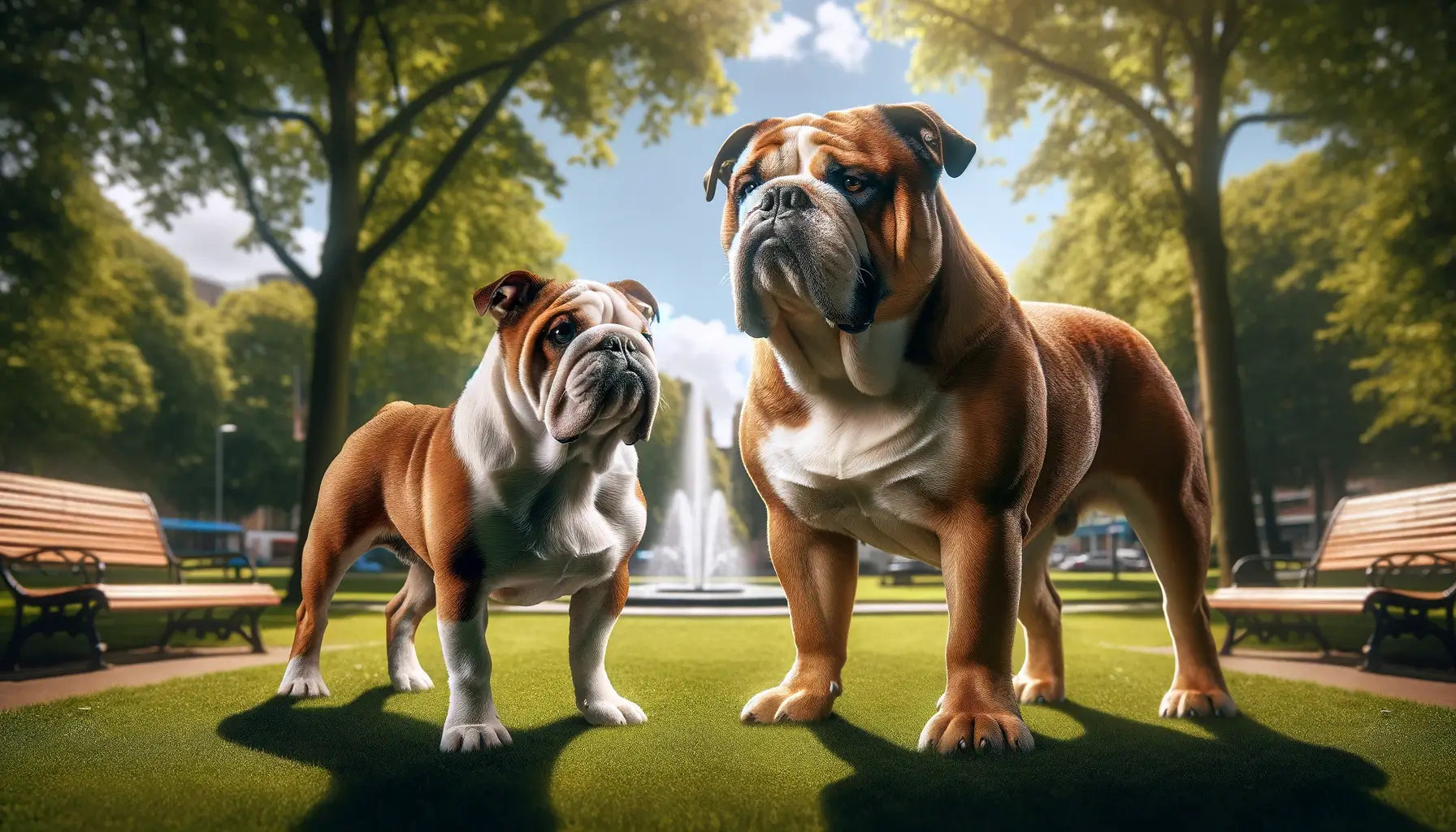
Navigating the Bulldog Breed Landscape
The current popularity and availability of the Olde English Bulldogge and the English Bulldog reflect their enduring appeal and the public’s growing awareness of breed-specific health and lifestyle needs. While the English Bulldog has long been a fixture in popular culture and dog shows, contributing to its widespread recognition and demand, the Olde English Bulldogge has gained attention for its health-oriented breeding and athletic capabilities. Potential owners looking to bring a bulldog into their lives should consider not only the breed’s characteristics and compatibility with their lifestyle but also the ethical considerations of choosing a breeder or adoption route.
Trends in Breed Demand and Registration Statistics
The demand for each breed can fluctuate based on public perception, media influence, and awareness of health issues, impacting availability and adoption rates.
Availability from Breeders and Adoption Options
Prospective owners can find both breeds through reputable breeders who prioritize health and temperament, as well as through rescue organizations and shelters, where many bulldogs await loving homes.
Popularity Table: Comparative Insights
| Breed | Popularity Rank | Availability | Notes |
|---|---|---|---|
| Olde English Bulldogge | Rising interest | Moderate | Increasingly sought after for health and vigor. |
| English Bulldog | Consistently high | High | Popular for its distinctive appearance and character. |
🌟 Choosing Tips: Ethical Considerations and Fit
- Research Breeders: Look for breeders who conduct health screenings and offer transparent health histories.
- Consider Adoption: Many bulldogs in shelters or rescue groups are looking for a second chance at a loving home.
- Match to Lifestyle: Ensure the breed’s characteristics align with your living situation, activity level, and capacity for care.
- Say goodbye to joint issues with our Dog Joint Supplement! Keep your dog moving with ease and enjoying life to the fullest!
Cost of Ownership
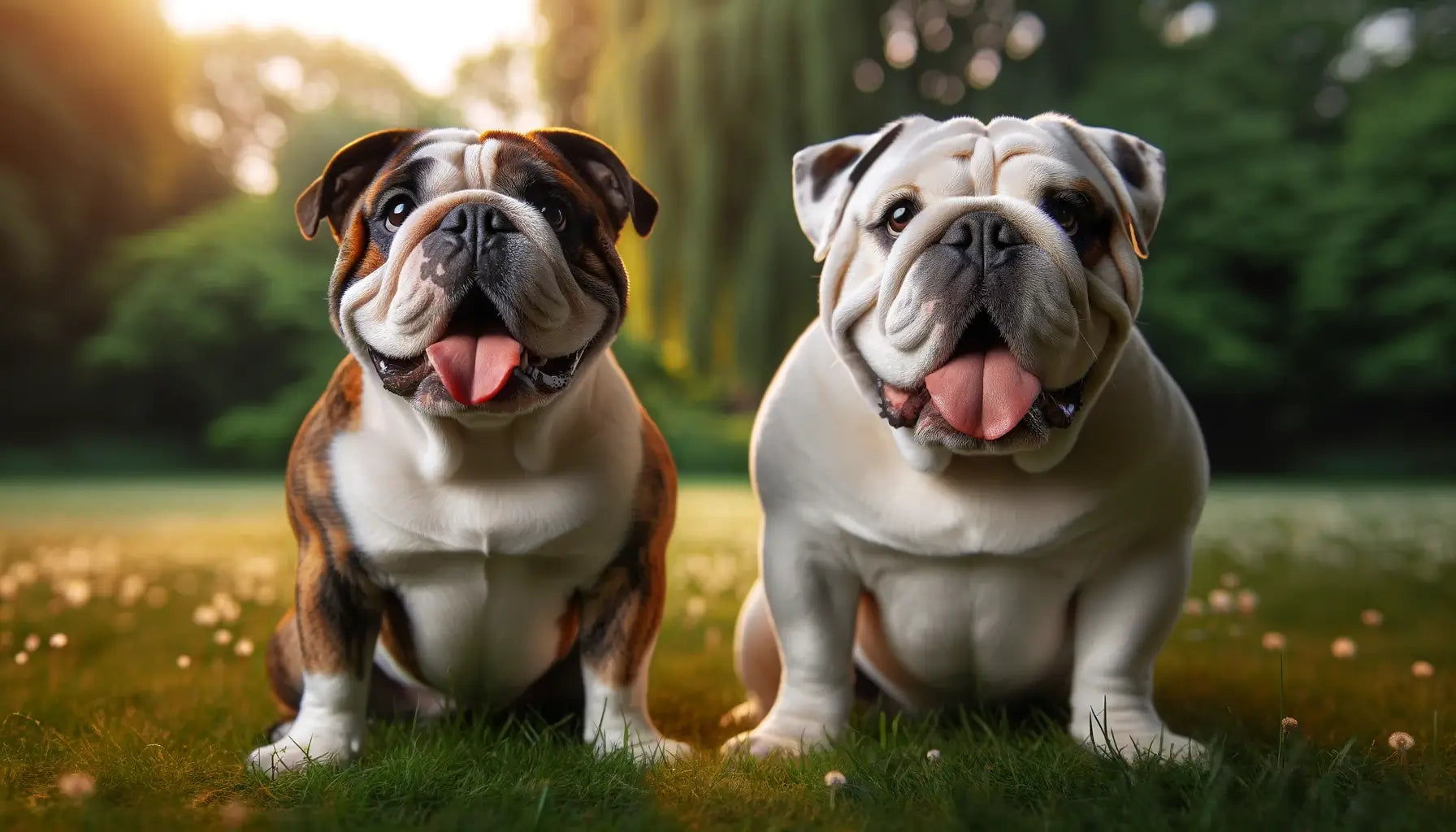
Understanding the Financial Commitment
Owning a bulldog, whether an Olde English Bulldogge or an English Bulldog, comes with a significant financial commitment that extends beyond the initial purchase or adoption fee. Prospective bulldog owners should be aware of the costs associated with providing proper care, including feeding, grooming, healthcare, and potential emergency medical expenses. These costs can vary widely depending on the breed, with the English Bulldog often incurring higher expenses due to its predisposition to certain health issues. Planning for these expenses is crucial for ensuring that you can provide a loving and responsible home for your bulldog.
Breakdown of Expenses
Initial costs such as the purchase price are just the beginning. Ongoing expenses for food, grooming supplies, routine veterinary care, and health insurance contribute to the lifetime cost of ownership.
Recommendations for Healthcare and Wellness
Investing in preventative healthcare, including regular vet check-ups and health insurance, can mitigate some of the costs associated with breed-specific health issues.
Cost Table: Ownership Expenses Compared
| Expense Category | Olde English Bulldogge | English Bulldog | Budgeting Tips |
|---|---|---|---|
| Initial Cost | $1,500 - $2,500 | $2,000 - $4,000 | Research breeders for the best value and health guarantees. |
| Food | $50 - $70/month | $50 - $70/month | High-quality diet tailored to breed-specific needs can prevent health issues. |
| Grooming | $30 - $50/month | $40 - $60/month | Regular grooming reduces long-term skin and coat issues. |
| Healthcare | $200 - $400/year | $300 - $500/year | Preventative care and insurance can save money on emergency treatments. |
💰 Budgeting Tips for Bulldog Owners
- Plan for the Long Term: Consider the lifetime cost of ownership when deciding to bring a bulldog into your home.
- Prioritize Health: Investing in health and wellness can reduce future costs associated with breed-specific issues.
- Seek Comprehensive Insurance: Look for pet insurance plans that cover genetic conditions common to bulldogs.
- Transform your senior dog's health with our Senior Dog Bundle! Say hello to vitality, energy, and overall well-being!
Pros and Cons of Each Breed

Evaluating the Advantages and Challenges
Choosing between an Olde English Bulldogge and an English Bulldog involves weighing the distinct advantages and potential drawbacks of each breed. Both offer immense loyalty and companionship but come with their own set of considerations that can impact their suitability for different individuals and families. The Olde English Bulldogge’s robust health and vigor present a compelling option for those seeking an active companion, while the English Bulldog’s calm demeanor makes it an excellent choice for those desiring a more laid-back pet. Understanding the pros and cons of each breed can help prospective owners make an informed decision that aligns with their lifestyle, preferences, and capacity for care.
Highlights of Each Breed’s Strengths
The Olde English Bulldogge stands out for its athleticism and fewer health issues, offering a more active lifestyle. The English Bulldog, known for its affectionate nature, thrives in environments that offer plenty of relaxation and companionship.
Potential Drawbacks to Consider
Potential owners should be aware of the health challenges and care requirements associated with the English Bulldog, while the Olde English Bulldogge’s energy levels might require more commitment to exercise and stimulation.
Pros & Cons Table: Direct Comparison
| Aspect | Olde English Bulldogge Pros | English Bulldog Pros | Cons |
|---|---|---|---|
| Health | Generally healthier with fewer genetic issues | - | EB: Prone to more health issues, OEB: Requires more activity |
| Temperament | Active and protective | Calm and loving | EB: Can be stubborn, OEB: May require more training |
| Lifestyle Fit | Suitable for active individuals/families | Good for less active homes or apartments | EB: Needs constant companionship, OEB: Not ideal for very small living spaces |
| Maintenance | Lower grooming needs | - | EB: High due to wrinkles and skin folds, OEB: Regular exercise needed |
| Longevity | Longer lifespan | - | EB: Shorter lifespan due to health issues |
🤔 Consideration Tips: Making the Right Choice
- Assess Your Lifestyle: Match the breed to your daily routine, activity level, and living situation.
- Healthcare Commitment: Be prepared for the healthcare needs and potential costs associated with your chosen breed.
- Behavioral Expectations: Consider your ability to meet the training, socialization, and companionship needs of the breed.
- Transform your active dog's performance with our Active Dog Supplement! Elevate their endurance and keep them going the extra mile!
Conclusion: Which Breed is Right for You?

Making an Informed Decision on Bulldog Breed Selection
Deciding whether an Olde English Bulldogge or an English Bulldog is the right fit for you involves careful consideration of several factors, including your lifestyle, space, and time commitments, as well as your ability to meet the specific needs of each breed. Both breeds offer unique advantages and come with specific requirements that can significantly influence your experience as a pet owner. Reflecting on the key differences and similarities highlighted throughout this comparison can guide you towards making a choice that ensures a harmonious and fulfilling relationship with your new bulldog companion.
Recap of Major Comparison Points
The Olde English Bulldogge offers a more active companionship with a focus on health and vitality, whereas the English Bulldog provides a loving presence suited to more relaxed environments.
Personal Lifestyle, Space, and Time Considerations
The ideal breed for you should complement your daily life, accommodate your living space comfortably, and align with the amount of time you can dedicate to pet care and companionship.
Summary Table: Final Breed Comparison
| Comparison Aspect | Olde English Bulldogge | English Bulldog | Decision Factor |
|---|---|---|---|
| Energy Level | Higher | Lower | Consider your own activity level |
| Health Concerns | Fewer | More | Assess your capacity for healthcare management |
| Space Requirements | Flexible, prefers space | Adaptable to smaller living spaces | Evaluate your living environment |
| Companionship | Engaging, requires attention | Loyal, enjoys relaxation | Match to your availability and lifestyle |
📌 Recommendation: Ensuring a Happy Partnership
- Reflect on Compatibility: Ensure the breed’s characteristics match your expectations and lifestyle.
- Prepare for Commitment: Acknowledge the long-term commitment required, including healthcare, exercise, and emotional bonding.
- Seek Reputable Sources: Whether adopting or purchasing, choose ethical breeders or rescue organizations to find your new bulldog companion.
- Transform your working dog's performance with our Working Dog Supplement Bundle! Elevate their endurance and keep them excelling in their duties!
FAQs on Olde English Bulldogge vs. English Bulldog
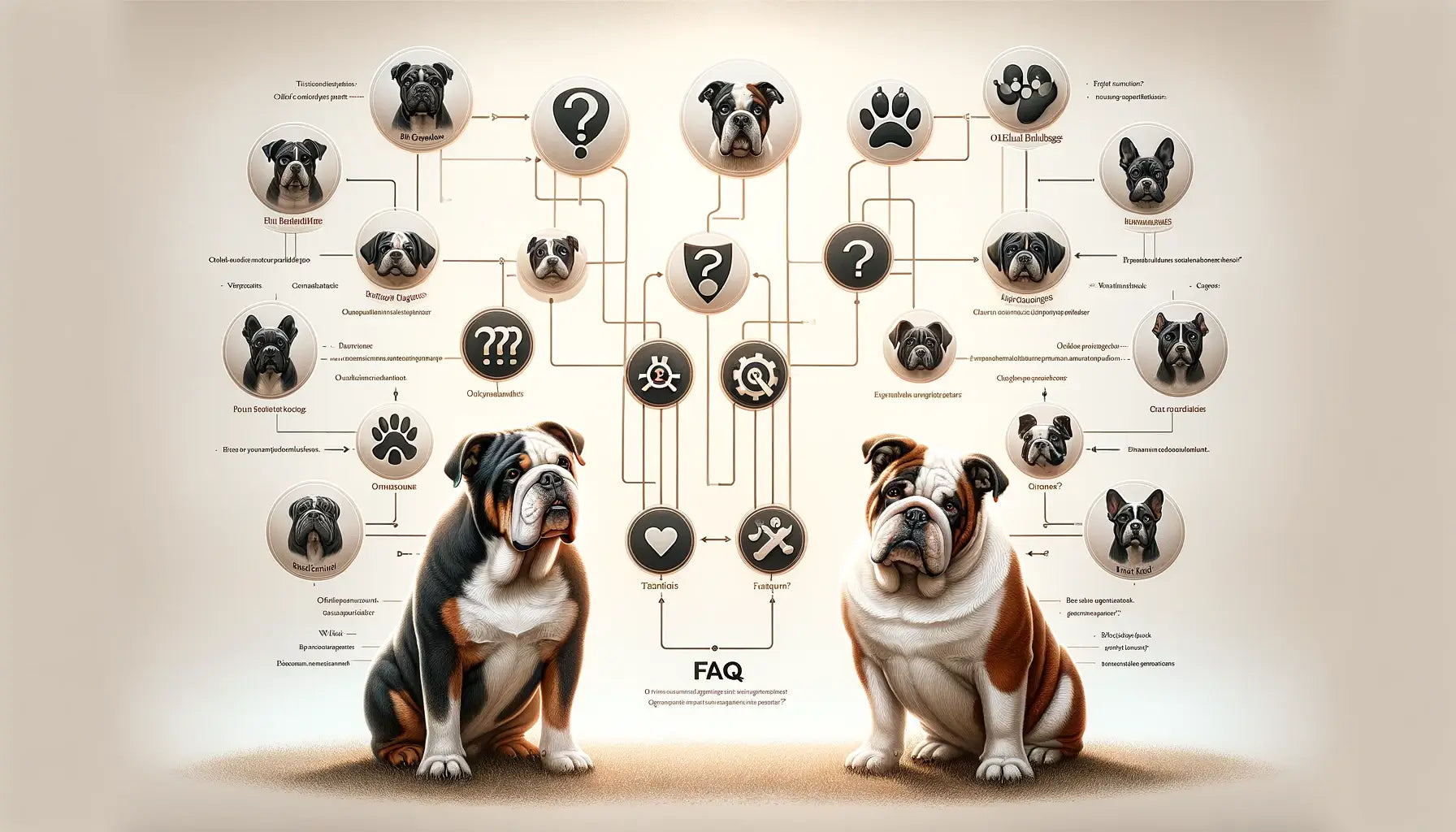
Clarifying Common Questions and Concerns
When considering the differences between an Olde English Bulldogge and an English Bulldog, potential owners often have specific questions about each breed’s characteristics, care needs, and suitability for various lifestyles. This FAQ section aims to address those common queries, providing concise and informative answers to assist in the decision-making process. Whether you’re curious about health issues, behavior, or simply which breed might be a better fit for your home, these answers can offer clarity and guidance.
FAQ Table: Unraveling the Differences Between Olde English Bulldogge and English Bulldog
| Question | Answer | Key Insights | Pro Tips |
|---|---|---|---|
| What are the main differences in appearance? | Olde English Bulldogges are taller, more muscular, and have a less wrinkled face than English Bulldogs. | Olde Bulldogges have a more athletic build. | Consider lifestyle compatibility with each breed’s physical capabilities. |
| How do their temperaments compare? | Both breeds are friendly and loyal, but Olde English Bulldogges may have more energy and require more exercise. | English Bulldogs are more laid back. | Match your energy level to the dog’s temperament. |
| What are the health concerns for each breed? | English Bulldogs are prone to more health issues, including respiratory and joint problems. Olde English Bulldogges are bred to have fewer health problems. | Healthier genetics in Olde Bulldogges. | Plan for potential vet visits and health screenings. |
| How does their lifespan differ? | Olde English Bulldogges have a longer lifespan, typically 11-14 years, compared to English Bulldogs at 8-10 years. | Longer companionship with Olde Bulldogges. | Consider long-term commitment and care. |
| What’s the difference in exercise needs? | Olde English Bulldogges require more frequent and vigorous exercise than English Bulldogs. | Higher energy levels in Olde Bulldogges. | Ensure you can meet their exercise requirements. |
| How do their sizes compare? | Olde English Bulldogges are generally larger, with males weighing up to 80 pounds, while English Bulldogs weigh around 50 pounds. | Size impacts space and care needs. | Assess your living space suitability. |
| What are the grooming requirements? | Both require regular grooming, but English Bulldogs may need more attention to facial wrinkles to prevent infections. | Simplified grooming for Olde Bulldogges. | Incorporate grooming into routine care. |
| Are there breeding differences? | English Bulldogs often require artificial insemination and C-sections for breeding, whereas Olde English Bulldogges can usually breed and birth naturally. | Natural breeding reduces health risks for Olde Bulldogges. | Understand the ethical implications of breeding practices. |
| How do their ancestries differ? | Olde English Bulldogges were bred in the 1970s to recreate the healthier 18th-century bulldog, while English Bulldogs have been bred down from bull-baiting dogs. | Historical purpose vs. Modern companion. | Knowledge of breed history can deepen your connection. |
| What are the price ranges for each breed? | English Bulldogs are generally more expensive due to breeding costs, ranging from $1,500 to $4,000. Olde English Bulldogges range from $1,000 to $3,000. | Cost reflects breeding complexities. | Budget for purchase and ongoing care. |
| How is their adaptability to climate? | Olde English Bulldogges can tolerate a wider range of temperatures. English Bulldogs are more sensitive to heat due to their shorter muzzles. | Consider your local climate in your choice. | Ensure a comfortable environment for your pet. |
| What are their training needs? | Both breeds can be stubborn, but Olde English Bulldogges may respond better to training due to their energy levels. | Positive reinforcement techniques work best. | Commit to consistent, patient training. |
| Are they good with children and other pets? | Yes, both are known to be affectionate and gentle with children and can coexist peacefully with other pets if properly socialized. | Early socialization is key. | Foster a family-friendly environment from the start. |
| How do dietary needs compare? | Both breeds require high-quality diets, but Olde English Bulldogges may need more food due to their larger size and higher energy levels. | Balanced nutrition is crucial. | Consult a vet for personalized diet plans. |
| What is the best environment for each breed? | English Bulldogs do well in apartments due to their lower energy levels. Olde English Bulldogges thrive in environments where they can be more active. | Match your living situation to the dog’s needs. | Provide ample space for exercise and play. |

